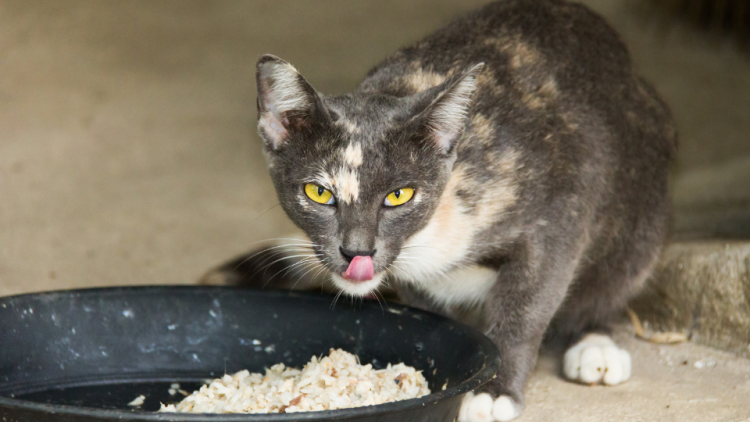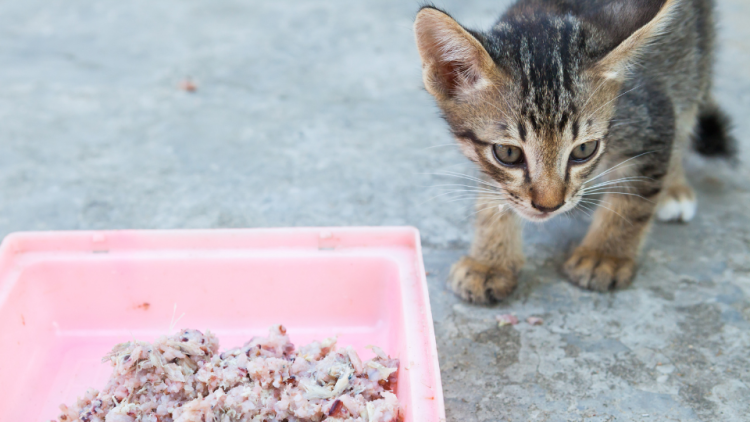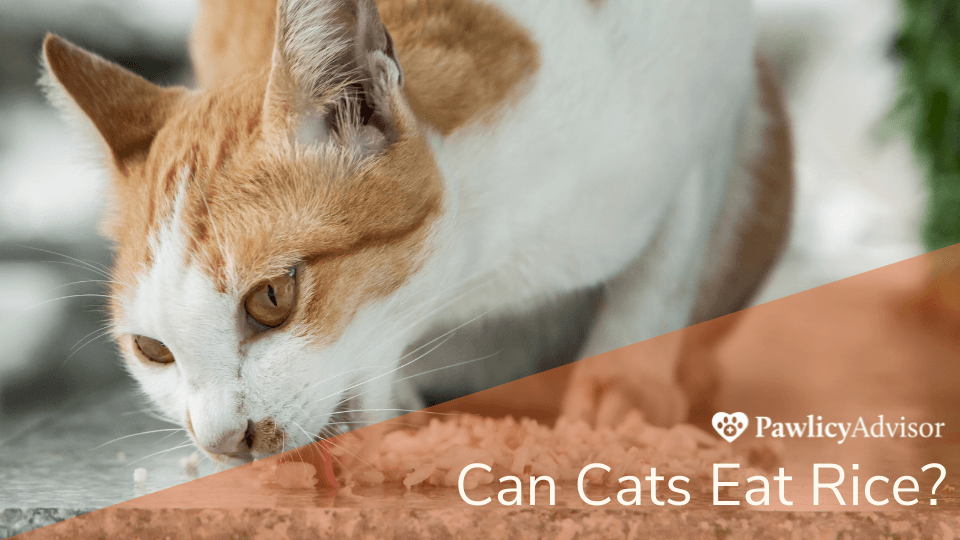Rice is one of the most popular cereal grains, and humans enjoy it as part of many dishes. But can our feline companions eat it too? You’ve probably noticed that many commercial cat food manufacturers include grains like rice in feline food products, but is rice good for cats by itself? What about brown rice?
Keep reading to learn everything you need to know about cats and rice.
Table of Contents:
- Can cats eat rice?
- Can cats eat white rice?
- Can cats eat brown rice?
- When is rice bad for cats?
- How to safely feed rice to your cat
- Safer alternatives than rice for cats
- Key Takeaways
Pro Tip: Pet insurance can help you cover the cost of vet bills, so you can rest assured that your feline friend will receive the best possible care if the unexpected happens.
Can cats eat rice?
Yes, cats can safely consume rice, but only from time to time and in moderate amounts. Rice is not toxic to cats, so a bit of it won’t do your kitty any harm, but you shouldn’t give too much as rice is not an essential part of their diet.
As obligate carnivores, cats meet their nutritional requirements by consuming other animals. So, if your pet receives all their required nutrients from quality cat food, they won’t gain nutritional benefits from eating rice on the side.
However, your vet might recommend giving your cat a bit of rice if they suffer from diarrhea or stomach upset because the dietary fiber helps harden the stool.
Can cats eat white rice?
White rice is actually processed brown rice. The germ, bran, and hull are removed from the grain, making the grain softer and easier to chew. Experts say that white rice is among the easiest grains for cats to digest because it’s bland and low in dietary fiber.

Can cats eat brown rice?
Healthy eaters prefer brown to white rice because it provides lots of B vitamins, folate, iron, selenium, magnesium, potassium, and fiber. But is brown rice better for cats?
Brown rice is unprocessed white rice, which makes it a bit more difficult for kitties to digest. In addition, their digestive system won’t absorb any of the nutrients present in brown rice, except fiber.
The bottom line is, cats can eat both white and brown rice as long as it’s cooked properly and served in small amounts.
When is rice bad for cats?
While most cats can safely consume small quantities of rice, there are a few exceptions pet parents should keep in mind:
- Some cats are sensitive to eating new foods. If they aren’t used to consuming grains, they might vomit or suffer from digestion issues. As obligate carnivores, cats’ metabolism and gastrointestinal (GI) tracts have adapted to consuming meat so that the rice can cause GI upset.
- Too much rice is bad for cats. One study found that cats whose diet consisted of 25% or more rice bran had reduced taurine levels resulting in a taurine deficiency. Taurine is a crucial amino acid for felines and can only be found in animal protein. In addition, rice is rich in fiber. If fed in significant quantities, it can cause diarrhea or make your cat constipated.
- Cats should never eat uncooked rice, as it is difficult to digest and can result in abdominal pain, bloating, gas, and upset stomach. Moreover, uncooked rice can contain a natural pesticide called lectin, which can cause vomiting and diarrhea. If you notice bloating and your feline friend seems to be in pain more than 24 hours after ingesting uncooked rice, take them to the veterinarian as soon as possible.
- If you give your cat rice, be sure it’s plain. Spices, salt, onions, garlic, and other additives commonly combined with rice can be toxic to cats. Onions and garlic contain a poisonous compound that can lead to oxidative damage to the cat’s red blood cells. In addition, garlic can cause an illness known as gastroenteritis with symptoms like diarrhea, vomiting, and oral irritation.
- The carbs in rice can lead to obesity in cats. Obese felines are more likely to develop health issues like diabetes.
- If a kitten consumes too much rice too often, they might become malnourished. Sometimes, cats can feel full after they’ve eaten rice and lose their appetite for the meat that actually gives them their proper nutrients.

Always ask your vet before feeding your cat any human food items, including rice.
Pro Tip: Your pet insurance plan can cover the diagnosis and treatment for feline diabetes as long as it’s not deemed a pre-existing condition. If diabetes were present before starting your insurance policy, the condition wouldn’t be covered, so it’s essential to protect your cat as soon as possible.
How to safely feed rice to your cat
As rice offers no nutritional benefit to cats, it’s best to avoid giving your cat rice entirely and offer it only in case they suffer from mild diarrhea.
If you do decide to feed them rice, only offer it as a special treat and in small amounts. Ensure that it’s cooked properly and doesn’t contain any seasonings or spices.
Rice and other grains should make up less than 25% of your pet’s entire meal. So, if you decide to feed your pet rice, ensure that at least 50% of the ingredients in their meal come from meat products. In addition, be sure to check the ingredient list on store-bought cat foods - even if the first ingredient is a meat product, there might still be more grains than meat.
As mentioned earlier, rice works wonders when it comes to treating diarrhea in cats. Both brown and white can be offered for this purpose as long as they’re cooked properly and served unseasoned. A small addition of cooked rice into your kitty’s usual food can improve digestion by hardening the stool. However, keep in mind that there are various other ways to cope with diarrhea. That’s why it’s always best to consult your veterinarian about the best course of action.
Safer rice alternatives for cats
If you want to share human foods with your cat, be sure to discuss the best and safest options. The food items you share with your furry friend should be plain and without additives like sugar, salt, spices, onions, garlic, and other ingredients that might be toxic to your cat.
Lean meats like plain chicken, beef, lamb, liver, and lean deli meats are usually a safe option, as well as cooked eggs and fish like tuna and salmon.
Vegetables like carrots, pumpkin, broccoli, and squash can also be healthy for some cats, served in moderate amounts. Cats can also consume small amounts of some fruits, such as watermelon and blueberries.
If you’re looking for a way to help treat your pet’s mild case of diarrhea, many vets will recommend giving fiber-rich food. Besides rice, pumpkin can also be a great source of dietary fiber that will harden your pet’s stool. Your vet might also recommend dietary changes, increased water intake, probiotic supplements, or medication like kaolin-pectin.
Key Takeaways
- Rice is safe for feline consumption as an occasional treat, as long as it is adequately cooked and served in moderate amounts.
- Due to its high fiber content, rice has been known to help with diarrhea and stomach issues in cats.
- However, rice is not part of the natural diet for cats and is not likely to provide them with any nutritional benefits. Cats are obligate carnivores, so it might not be wise to feed your kitty grains too often.
- Before you feed your cat rice, it is always wise to consult with your vet first. Many cats have a sensitive stomach, and new foods can cause symptoms such as diarrhea and vomiting after eating rice.
